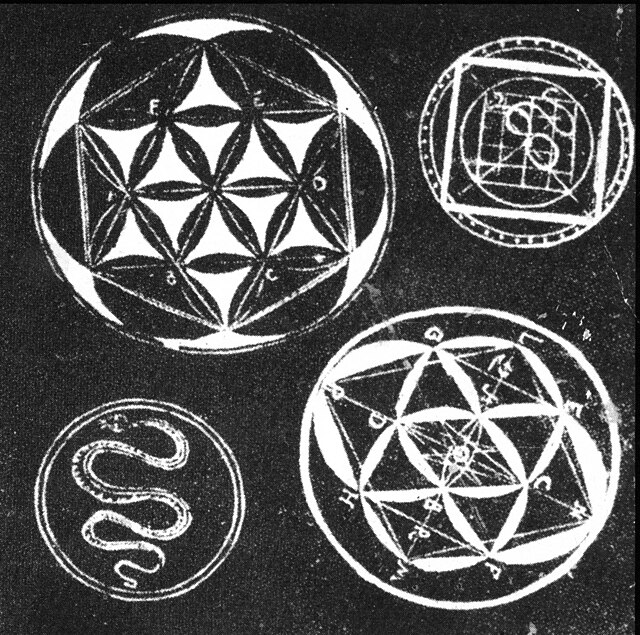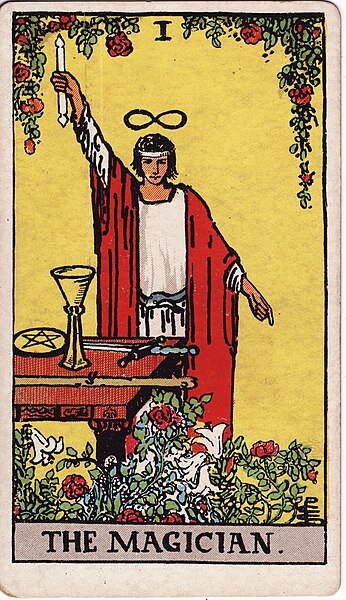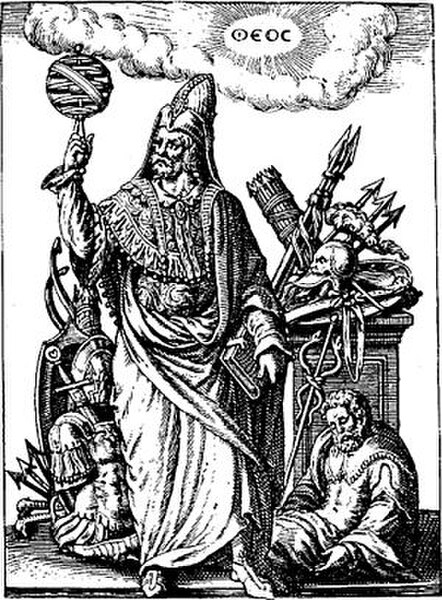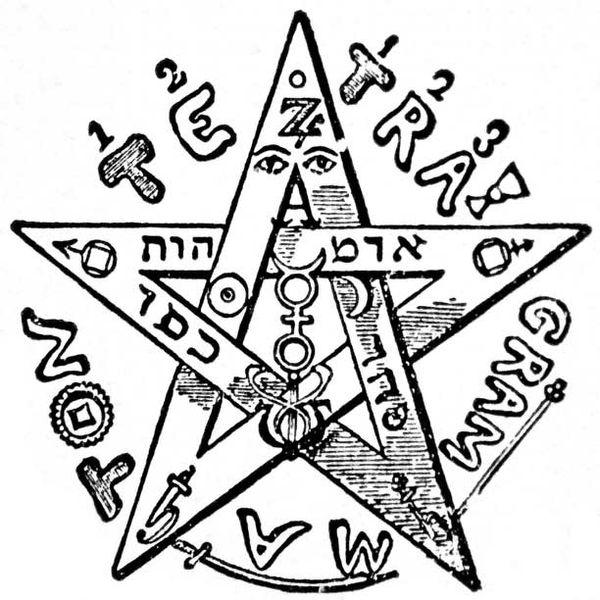Giordano Bruno was an Italian philosopher, poet, cosmological theorist and esotericist. He is known for his cosmological theories, which conceptually extended to include the then-novel Copernican model. He proposed that the stars were distant suns surrounded by their own planets (exoplanets), and he raised the possibility that these planets might foster life of their own, a cosmological position known as cosmic pluralism. He also insisted that the universe is infinite and could have no center.
Portrait from Opere di Giordano Bruno, published in 1830
The earliest depiction of Bruno is an engraving published in 1715 in Germany, presumed based on a lost contemporary portrait.
Woodcut from "Articuli centum et sexaginta adversus huius tempestatis mathematicos atque philosophos", Prague 1588
The trial of Giordano Bruno by the Roman Inquisition. Bronze relief by Ettore Ferrari, Campo de' Fiori, Rome.
Western esotericism, also known as esotericism, esoterism, and sometimes the Western mystery tradition, is a term scholars use to classify a wide range of loosely related ideas and movements that developed within Western society. These ideas and currents are united since they are largely distinct both from orthodox Judeo-Christian religion and Age of Enlightenment rationalism. It has influenced various forms of Western philosophy, mysticism, religion, pseudoscience, art, literature, and music.
A colored version of the 1888 Flammarion engraving
The Magician, a tarot card displaying the Hermetic concept of "as above, so below". Faivre connected this concept to 'correspondences', his first defining characteristic of esotericism.
A later illustration of Hermes Trismegistus
Pentagram of Éliphas Lévi








